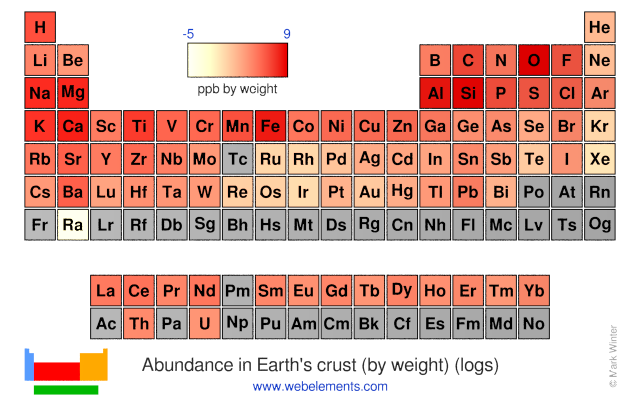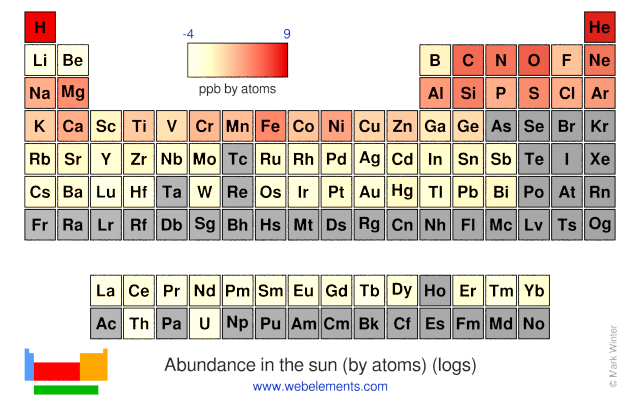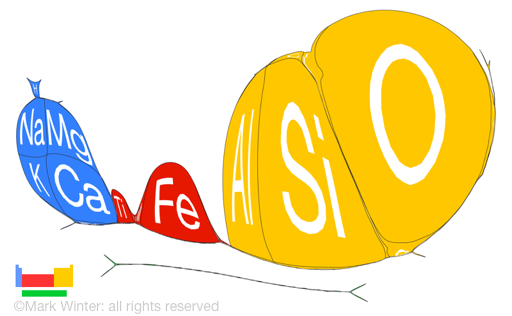Helium - 2He: geological information
Helium is present in the atmosphere at about 0.0005% (1 part in 200000) by volume and is an important component within hydrocarbon gases in the USA. Its origin in these gases is traced to the decay of radioactive elements in rocks. Some minerals contain occluded helium and this can be liberated by heating. Some rocks consist of minerals which contain uranium and potassium. These decay to helium and argon and analysis of these gases can be used to determine the age of the rock. The bulk of the western world's supply is obtained from wells in the USA.
Helium is the second most abundant element in the universe. It is very common in the hotter stars. It is an important component in the proton-proton reaction and the carbon cycle in stars.
Abundances of helium in various environments
In this table of abundances, values are given in units of ppb (parts per billion; 1 billion = 109), both in terms of weight and in terms of numbers of atoms. Values for abundances are difficult to determine with certainty, so all values should be treated with some caution, especially so for the less common elements. Local concentrations of any element can vary from those given here an orders of magnitude or so and values in various literature sources for less common elements do seem to vary considerably.
| Location | ppb by weight | ppb by atoms |
|---|---|---|
| Universe | 230000000 | 72000000 |
| Sun | 230000000 | 74000000 |
| Meteorite (carbonaceous) | (no data) | (no data) |
| Crustal rocks | 5.5 | 30 |
| Sea water | 0.0072 | 0.011 |
| Stream | (no data) | (no data) |
| Human | (no data) | (no data) |


The chart above shows the log of the abundance (on a parts per billion scale) of the elements by atom number in our sun. Notice the "sawtooth" effect where elements with even atomic numbers tend to be more strongly represented than those with odd atomic numbers. This shows up best using the "Bar chart" option on the chart.

